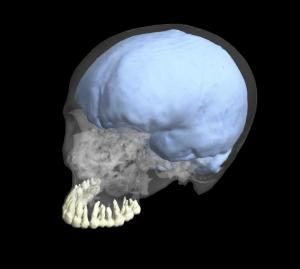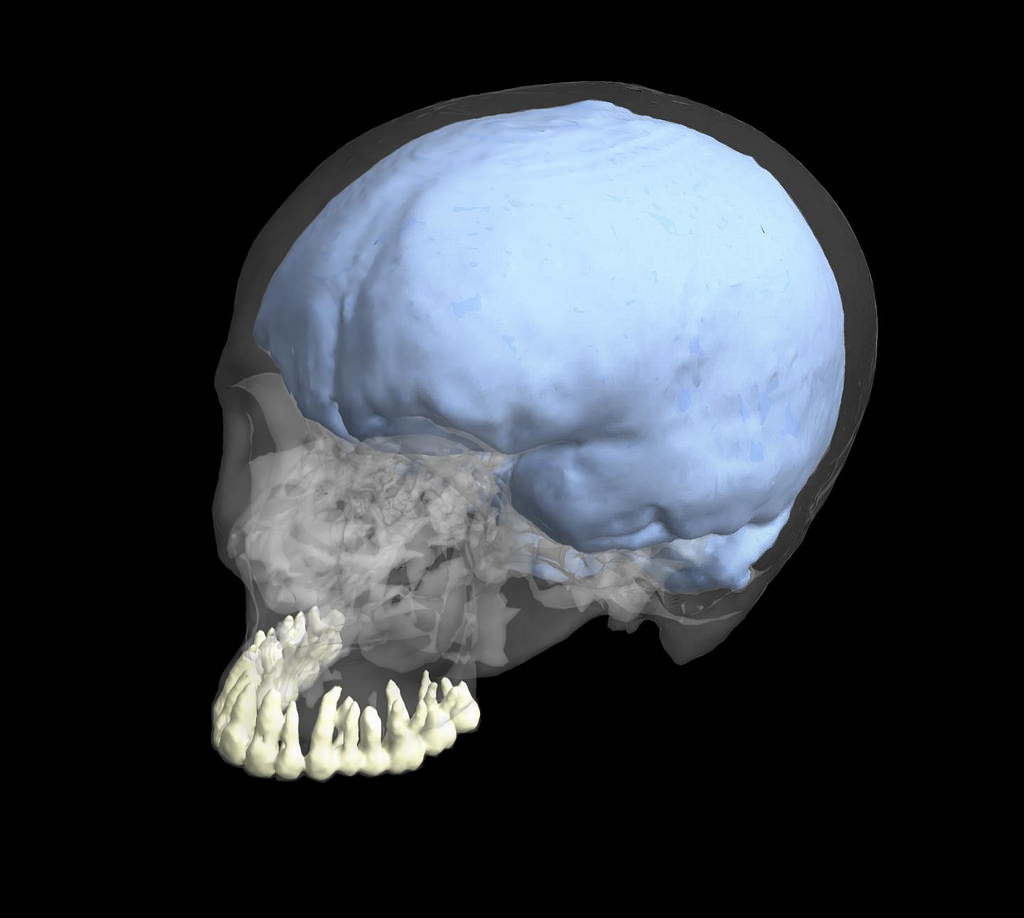
GEORGE WASHINGTON UNIVERSITY—WASHINGTON (Jan. 2, 2017)—A new study from the George Washington University’s Center for the Advanced Study of Human Paleobiology (CASHP) found that whereas brain size evolved at different rates for different species, especially during the evolution of Homo, the genus that includes humans, chewing teeth tended to evolve at more similar rates. The finding suggests that our brains and teeth did not evolve in lock step and were likely influenced by different ecological and behavioral factors.
This research challenges the classically accepted view that reduction of tooth size in hominins is linked with having a larger brain. The reasoning is that larger brains allowed hominins to start making stone tools and that the use of these tools reduced the need to have such large chewing teeth. But recent studies by other authors found that hominins had larger brains before chewing teeth became smaller, and they made and used stone tools when brains were still quite small, which challenges this relationship.
The new study evaluates this issue by measuring and comparing the rates at which teeth and brains have evolved along the different branches of the human evolutionary tree.
“The findings of the study indicate that simple causal relationships between the evolution of brain size, tool use and tooth size are unlikely to hold true when considering the complex scenarios of hominin evolution and the extended time periods during which evolutionary change has occurred,” said Aida Gómez-Robles, lead author of the paper and a postdoctoral scientist at GW’s CASHP.
______________________________________
This is a 3-D reconstruction of a modern human cranium showing the teeth and endocranial cast. Credit: George Washington University
____________________________________________________
To conduct the research, Dr. Gómez-Robles and her colleagues analyzed eight different hominin species. The researchers identified fast-evolving species by comparing differences between groups with those obtained when simulating evolution at a constant rate across all lineages, and they found clear differences between tooth evolution and brain evolution. If the classical view proposing co-evolution between brains and teeth is correct, they expected to see a close correspondence between species evolving at a fast rate for both traits. The differences they observed indicate that diverse and unrelated factors influenced the evolution of teeth and brains.
“Once something becomes conventional wisdom, in no time at all it becomes dogma,” said Bernard Wood, university professor of human origins at GW and a co-author of the paper. “The co-evolution of brains and teeth was on a fast-track to dogma status, but we caught it in the nick of time.”
The research published Jan. 2 in the Proceedings of the National Academy of Sciences.
Source: George Washington University news release.
___________________________________________________
Subscribe to Popular Archaeology Premium. Available on all laptops and mobile devices, and still the industry’s best value at only $9.00 annually.
___________________________________________
Travel and learn with Far Horizons.
____________________________________________
This richly illustrated issue includes the following stories: Recent findings shedding new light on the whereabouts of the remains of Philip of Macedon, father of Alexander the Great; how an archaeologist-sculptor is bringing bones of the dead back to life; archaeologists uncovering town life at the dawn of civilization; an exclusive interview with internationally acclaimed archaeologist James M. Adovasio about what makes the Meadowcroft Rockshelter prominent in the ongoing search for the first Americans; what archaeologists are finding at the site of the ancient city of Gath, the home town of the biblical Philistine giant, Goliath; and how scientists are redrawing the picture of human evolution in Europe. Find it on Amazon.com.








